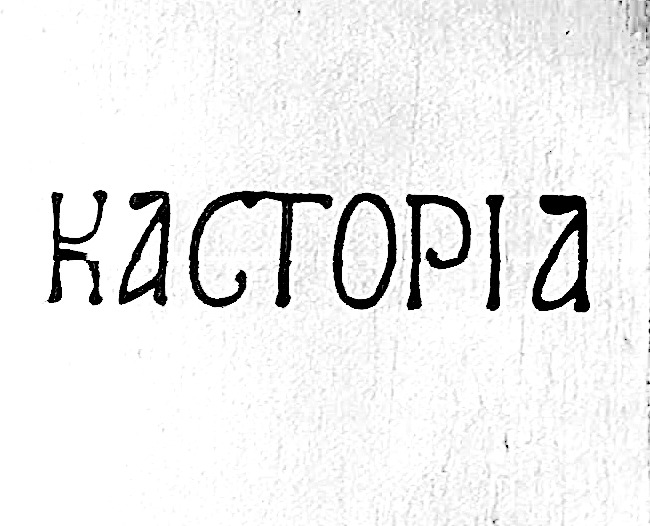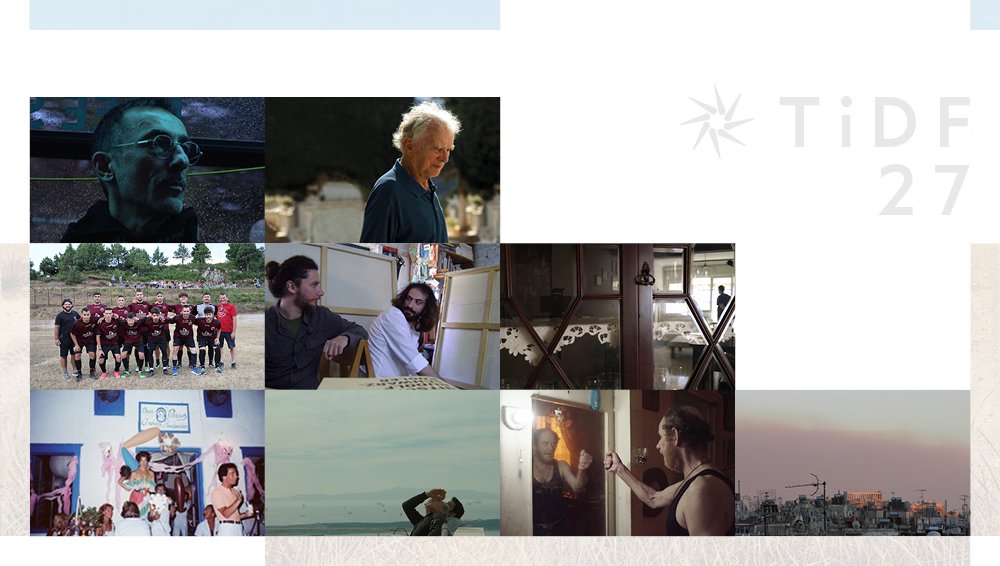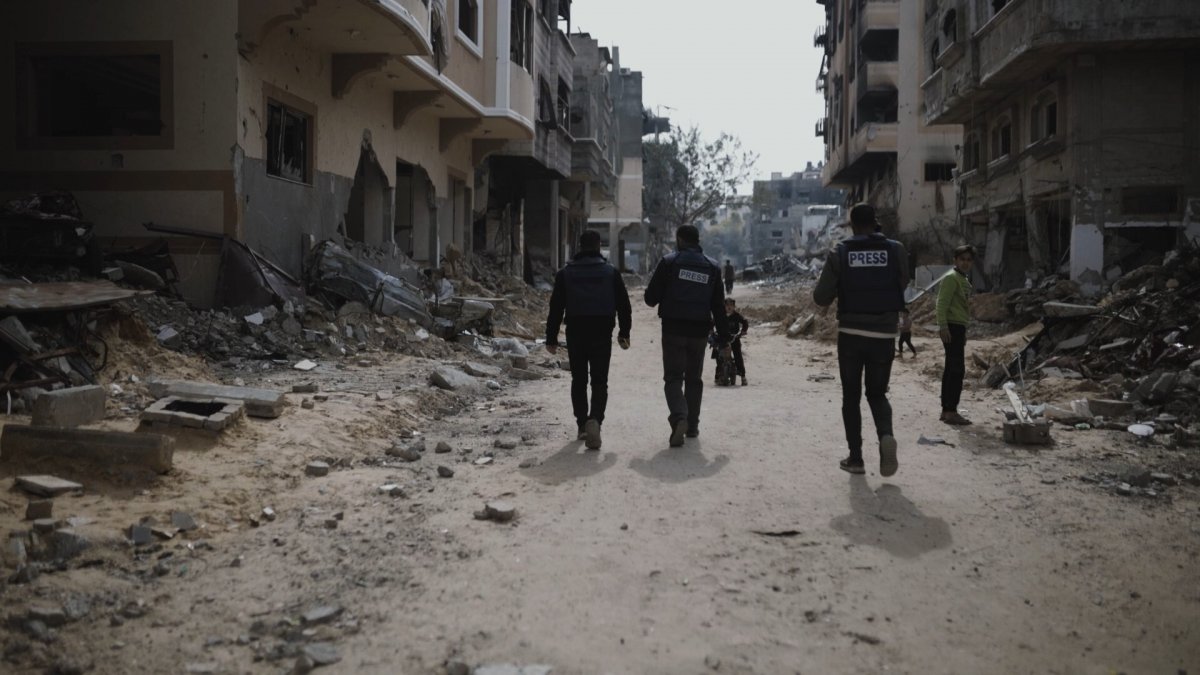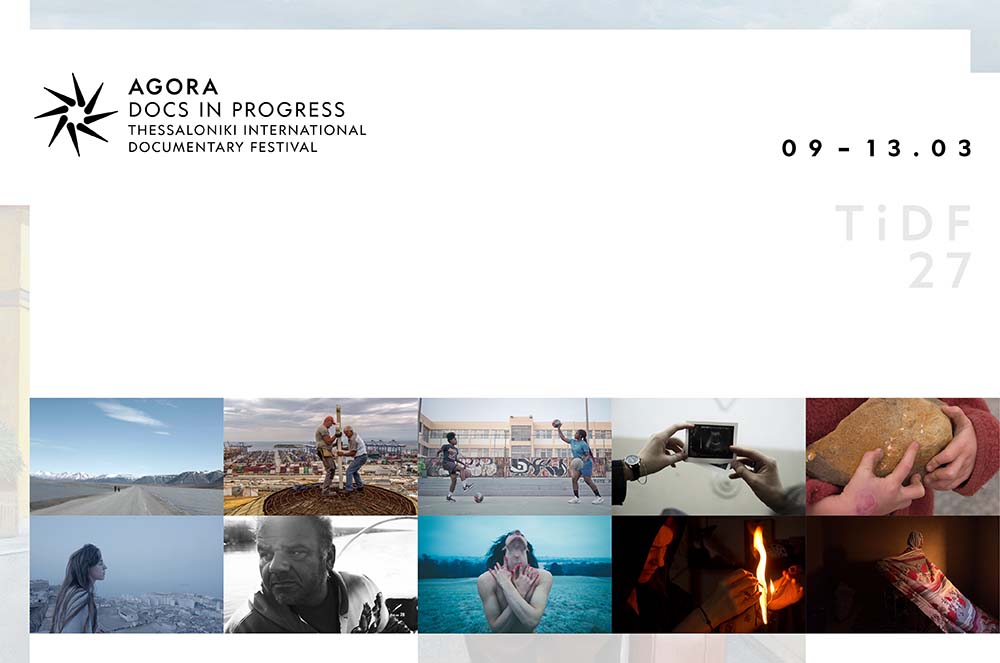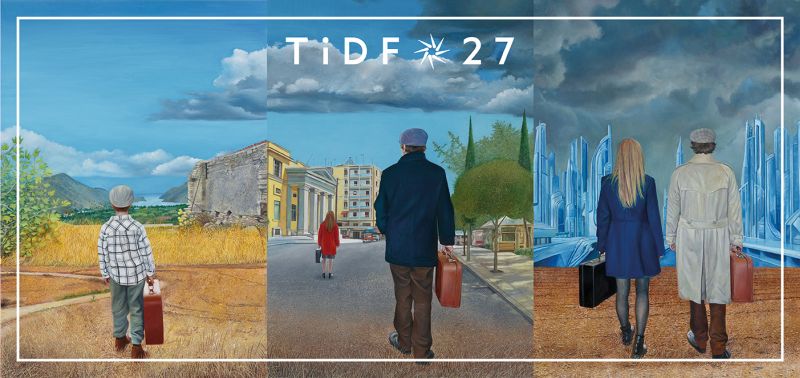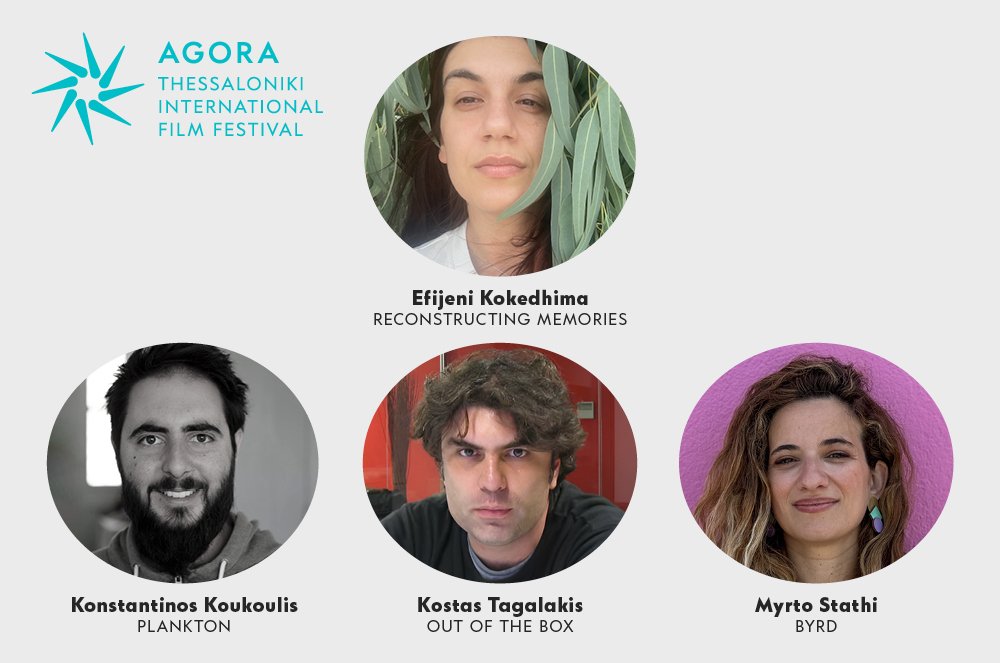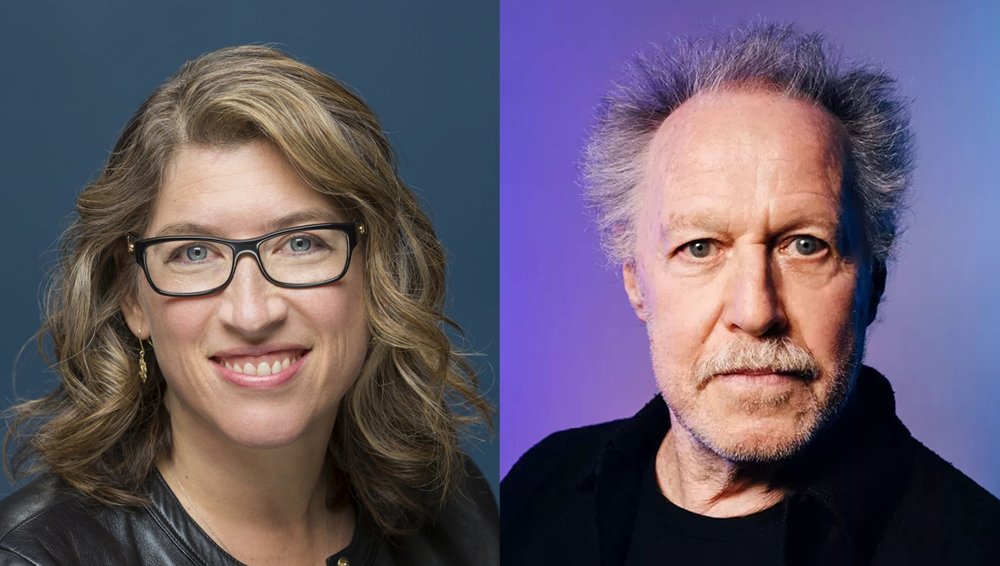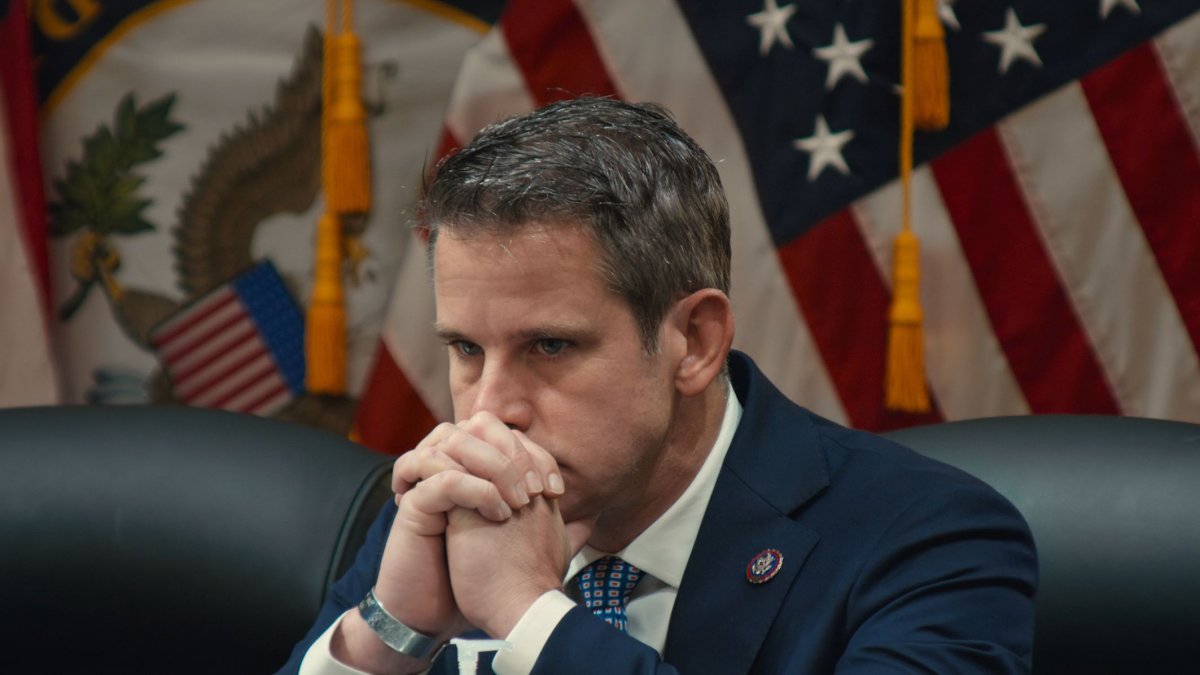62nd THESSALONIKI INTERNATIONAL FILM FESTIVAL ||
4-14/11/2021
Masterclass Yannis Chalkiadakis: Deleted Scenes, Forgotten Dreams
The award-winning editor Yannis Chalkiadakis delivered a masterclass on Wednesday November 10, at Pavlos Zannas theater, as part of the tribute “In the Cut: Editing and its Secrets”, hosted by the 62nd Thessaloniki International Film Festival. Drawing material from his rich filmography, Yannis Chalkiadakis shared with the audience the secret of what we see, what we don’t see, as well as the things we dream of, when we watch a film on the big screen.
In the first part of the masterclass, Mr. Chalkiadakis made some introductory comments on the art of editing. “Editing is usually excluded from awards. The Oscars found a simple and wise way to honor editing. The film that receives the Oscar for Best Film tends to receive the Oscar for Best Editing as well. In general, as to editing one would say that the more hidden it remains, the better it is”, he pointed out. Afterwards, the acclaimed editor spoke about the relation between editing and time. “When you start putting things in order, you realize that cinema is an art of framing and capturing time. It is a moving image and the definition of movement is connected to time. Each frame has a specific time. Each great director has a trademark time stamp. Tarkovsky and Resnais had a very specific stamp of time. Tarkovsky used to say that each frame is under the pressure of time, comparing editing to an orchestration”.
He then referred to the relation between editing and directing. “The film is created during editing and it is like a polaroid. Editor is the first viewer of the film. We are invited to its world and watch for the very first time what’s on the mind of the director. The director is prejudiced, because he has designed the film. There are directors that also do the editing of their movies, like Resnais used to do or like Soderbergh does, but these are exceptions. In general, when directors try to do the editing, they usually fail”, he pointed out.
Mr. Chalkiadakis explained that the relationship between the director and the editor is based on a constant conversation and brainstorming, it is a lifelong relationship. “The editor and the director are like an author and a text editor. The editor is assigned with the role of an advisor, and a guide on some level. Walter Murch makes an allusion to dream therapy to describe it, saying that someone is dreaming and someone else is the listener. The one who is dreaming narrates the dream to the other person who listens and the role of the listener is to offer the dreamer alternative narratives. That’s what happens in editing. There is a debate on who makes the decisions and has the final cut. The director provides the material, the film is the director’s creation. However, we engage in dialogue with the director. The relationship between the editor and the director is based on trust. We get really close and only together we go further. Both offer one another things that go beyond the range of initial expectations. All the films I have done would have been identical, if I didn’t have a personal relationship with each director”.
As he explained, in this process, the film is always the priority. “The only answer that I don’t accept from a director is that “it will be done this way because this is how I like it”. They have to give an explanation and the explanation has to be related to the film. The film is the most important thing”, he pointed out. Then, he referred to the “Kuleshov Effect”, which is under debate by many directors. “When two frames are tied together, sometimes a new thing is created, different that the two original frames. The largest percentage of narrative cinema is based on this function. There is a big debate; some directors deny it and Tarkovsky was one of them”, he stated.
In the second part of the masterclass, Mr. Chalkiadakis attempted to show the process of editing to the audience. “The director shoots the material, which is usually lengthy. For example, he shoots 40 minutes, from where you might use a scene of one or one and a half minute. In the beginning, you watch all the material and you do a first selection. Then you experiment, you create various versions of the same scene. It is difficult to end up with a specific form of a scene in the beginning, because you don’t have an overall sense of the film. You try and you see what it works”, he stated.
Mr. Chalkiadakis showed the audience five different versions of the same scene, where different frames are being used and each time the focus is shifted to a different element. “When we do the first cut of the film, the result is usually bad, more than bringing the directors to their knees, threatening that they won’t be doing movies no more. The directors I fear the most are the ones that say that the first cut is amazing”, he humorously added. Then, he spoke about the importance of creating mystery through editing. “A shot that doesn’t have anyone in the frame creates a mystery. Mystery is an essential element in editing, because it makes the viewer wonder, and forces everyone to participate. The viewer must analyze, interpret, predict, feel surprise and actively participate”, he pointed out.
Mr. Chalkiadakis also spoke about the role of the emotion. “In many films, the only thing that matters is emotion. We can never edit aiming at continuity, simply for the frame to work technically. As far as the music is concerned, it is the editor’s best friend. The music I insert in editing gives me a sense of rhythm. I usually insert in the beginning and then, usually due to high-cost royalties or for other reasons, I remove it. But it gives rhythm to the scene and helps the process”, he mentioned.
“The material of the film is remarkably ductile. It needs a bit of fantasy; you have plenty of options that you cannot see right away. Very small things, minor choices might hide a lot of work. It is a slow and painful process. There should always be a question mark. You should constantly doubt what you think is good. To openly accept mistakes. To pierce through what you thought to be bullet-proof. That’s how editing matures”, he pinpointed.
Mr. Chalkiadakis, inspired by the creative doubt he described, shared a story with the audience. “I had just finished college and I had a lot of spare time. I always had a principle as an editor. When you finish a film, you must rewatch the whole material from the beginning. In the beginning, I used to do that, but then I couldn’t anymore. However, it is very creative. You see things you haven’t noticed before”. Then, Mr. Chalkiadakis spoke about that magic moment, when the whole material is tied together and produces the story.
“It is magical, almost transcendental, the moment you realize that the cut works. Sometimes it just happens. Suddenly, it works as a whole, you follow the narrative, and someone tells you a story. And of course, you can still make small changes and cuts, but you are feeling confident that the film works”, he pointed out.
In the third part of the masterclass, Mr. Chalkiadakis showed some scenes from his filmography and more specifically from the films Strella by Panos Koutras and Interruption by Yorgos Zois, which he discussed, also answering questions from the audience. In one of the questions about the criteria to select a scene, he explained that this is something that comes with experience. “This search for the criteria is very important. It requires a lot of work. You learn through experience. Of course, when the story starts to take shape, you have the general bedrock”, he stated.
As for the question if each editor has a trademark style and “identity”, Mr. Chalkiadakis answered the following: “Some editors might have a slightly stronger trademark. However, I don’t think there is a personal identity in editing”. Finally, Mr. Chalkiadakis answered a question on the collaboration with the directors. “Some directors give the script very early in the process. With some of them, we do the development together. We discuss what is needed, what can be removed. We go through the material. As an editor, you read the script and then you put it aside for a while”, he commented, concluding his speech.



